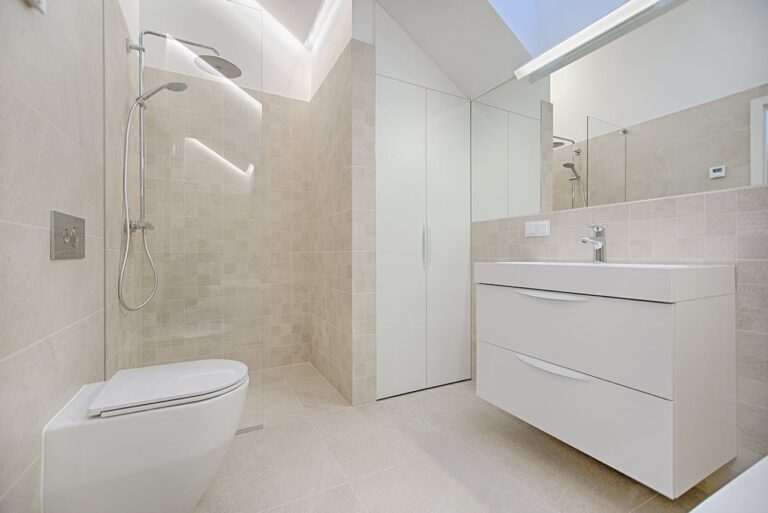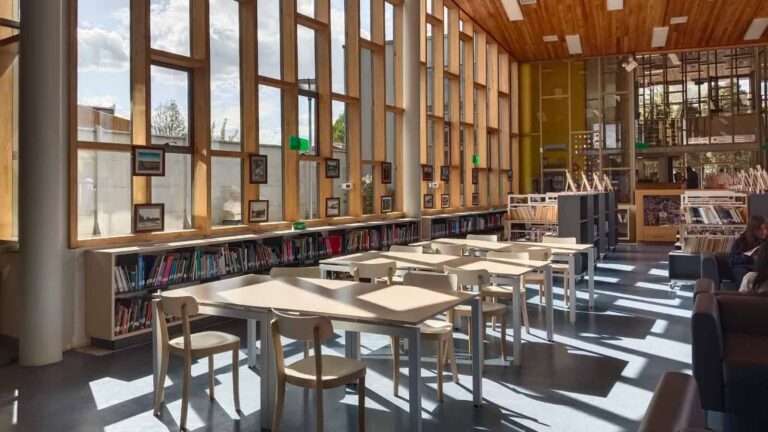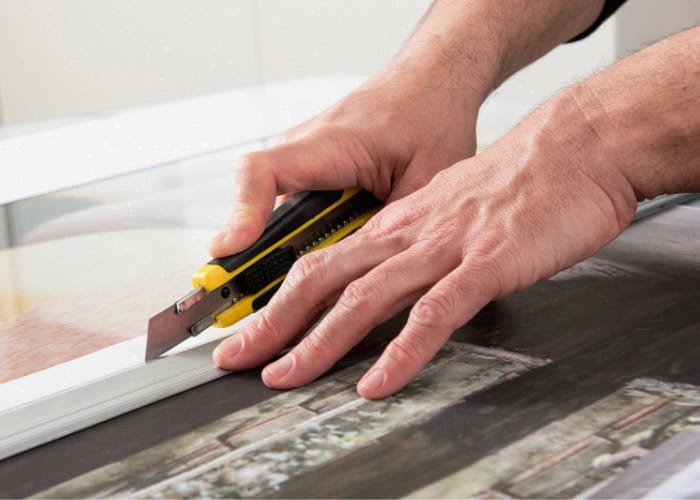Three hundred meters might sound like a number, but it’s a huge length. To understand it better, we compare it with real things. Think of massive buildings, giant ships, or even natural cliffs—many of them come close to this length. It becomes much easier to grasp when we relate 300 meters to things we can see or imagine.
That’s why comparisons help bring such distances to life. You’ll be amazed how often this length shows up around us. In this article, we will explore 9 amazing things that are about 300 meters long. Some are tall structures like the Eiffel Tower, while others stretch horizontally like cruise ships or bridges.
We’ve included natural wonders, famous landmarks, and even everyday comparisons. This list interests everyone, whether you’re curious about heights, lengths, or both. You’ll have a clearer idea of 300 meters’ length by the end.
Table of Contents
Toggle300 Meters in Different Units of Measurement
Three hundred meters is a common distance. It’s used in many ways to measure things. In feet, it equals about 984 feet. If we convert it to yards, it’s roughly 328.1 yards. In kilometers, 300 meters is 0.3 kilometers. It’s also 30,000 centimeters or 300,000 millimeters. These conversions help us better understand distances in various units. This makes it easier to compare sizes and distances in different contexts.
Three hundred Meters in Other Units
| Measurement Unit | Value Equal to 300 Meters |
| Centimeters | 30,000 |
| Yards | 328.08 |
| Kilometers | 0.3 |
| Inches | 11,811 |
| Feet | 984.25 |
| Rods | 59.88 |
| Nautical Miles | 0.162 |
| Millimeters | 300,000 |
1. The Eiffel Tower (to the tip—300 m)
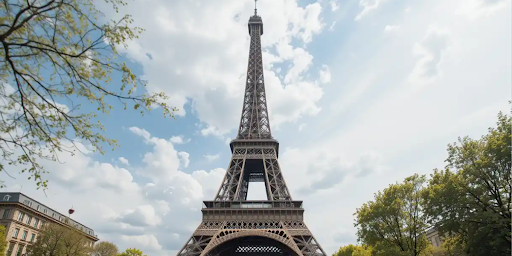
The Eiffel Tower in Paris stands 300 meters tall, from base to tip. That’s as high as stacking 25 school buses! Built in 1889, it was only meant to last 20 years but became France’s most famous symbol. Visitors can climb 1,665 steps or ride elevators to three amazing viewing platforms. The entire city is spread below you from the top like a beautiful map.
At night, the tower transforms into a sparkling jewel with 20,000 golden lights. Every evening on the hour, it puts on a special light show that makes it twinkle like diamonds. An amazing fact? The tower increases in height with summer warmth and shrinks in winter’s cold! Team painters have worked to protect their iron frames with fresh paint coats for years. Whether you see it by day or night, the Eiffel Tower always takes your breath away.
2. A Small Mountain or Cliff—Preikestolen, Norway

Preikestolen, or Pulpit Rock, is a well-known cliff in Norway. It overlooks the beautiful Lysefjord below. People from all over the world hike to the top for the stunning views. It can be a challenging hike, but the views at the top make it all worth it. Once you reach the top, you can see the fjord and the mountains surrounding it.
It’s a peaceful place that draws many nature lovers. The flat rock on top is perfect for resting and taking in the sights. The cliff stands three hundred meters above the water, almost as tall as the Eiffel Tower. The view from the top is fantastic, with boats looking tiny below. The drop from the cliff to the water below is huge.
The wide, flat top of the rock makes it easy to enjoy the view. The surrounding nature, like mountains and trees, adds to the beauty—a warm place to sit back and appreciate the landscape. Visitors often leave feeling amazed by the scenery. The experience of this place stays with you after you leave.
3. Arecibo Radio Telescope (305m)
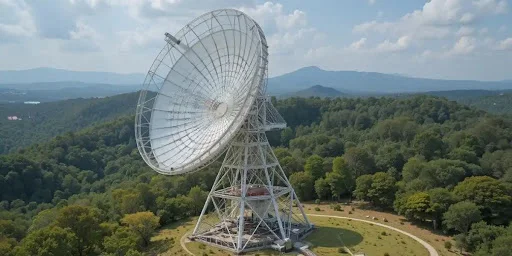
The Arecibo Radio Telescope was a large structure located in Puerto Rico. It helped scientists study space, including stars and planets. The telescope used a large dish to capture radio waves from deep space. For many years, it was an essential tool for research.
It also helped study Earth’s atmosphere. Scientists have used it for many significant projects. The telescope played a big role in space exploration. It was an essential part of space science. It measured 305 meters before it came down. Just a bit taller than our target. Its dish was as large as three football fields.
Losing the Arecibo Telescope was a massive setback for space research. It allowed researchers to study planets and seek out signs of life. Even without the telescope,its research is still helping scientists today. Its discoveries continue to be important today. The telescope will be remembered for its contribution to science.
Read Also: Things That Are 50 Meters Long
4. A Modern Cruise Ship

A cruise ship is a floating town traveling from port to port. They have pools, cinemas, gyms, and restaurants. People enjoy relaxing while traveling across oceans. These ships are designed for fun and comfort. Cruises often stop at many beautiful locations.
Spend your time enjoying entertaining games, shows, and scrumptious meals. Families, couples, and friends all enjoy cruise vacations. It’s perfect for both fun adventures and peaceful moments. Most luxury cruise ships are around 300 meters long. They are massive but glide smoothly through the sea.
Their large size keeps them steady in waves. These ships are carefully built for safety and luxury. Each section offers something special for travelers. The design tells a story of travel becoming easier and faster. Cruise ships truly bring comfort to the open waters.
5. Three American Football Fields

American football fields are commonly seen across the United States. These fields are used for games at all levels, from schools to professional leagues. Clear lines and goalposts mark the boundaries. Players score touchdowns and run plays on these fields.
Many people have either played or watched games on them. American culture holds football fields in high regard. This is something many Americans recognize. Each football field is approximately 91.4 meters long. When you line up three of them, it totals about 274 meters.
Adding the end zones makes it nearly close to our measurement. This helps to visualize the distance easily. Three football fields lined up is a great way to picture 300 meters. It’s an easy and clear comparison to grasp. It’s a familiar way to learn the size of long distances.
6. Wells Fargo Plaza, Texas

The structure mirrors Houston’s urban achievements. Known for its unique design, it is a key feature of the Houston skyline. The building is primarily used for office spaces and business purposes. Its height makes it easily noticeable among other structures.
People often recognize it when they look at the Houston skyline. The building is impressive and reaches approximately Three meters in height, including its spire. The spire gives the building additional height, making it even more noticeable. This height places it among the tallest buildings in Texas.
Its height makes it visible across Houston. The spire adds a unique architectural touch to the building. It is an iconic structure in Houston, and it is admired for its modern design. This plaza is crucial to the skyline and the identity of the city.
7. A Blue Whale’s Migration Path in One Dive
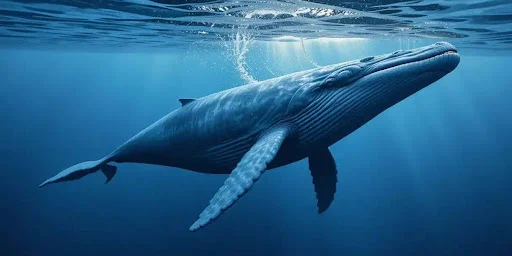
Earth’s largest animal, the blue whale, can grow to an impressive 30 meters in length. These incredible creatures travel long distances across oceans, looking for their main food source—krill. Krill, which resemble shrimp, are small creatures that live in the water.
To find these meals, blue whales dive as deep as Three hundred meters. This helps them gather large amounts of krill to meet their dietary needs. Blue whales’ migrations can span thousands of kilometers as they seek food. Their ability to dive to depths is truly remarkable for such large animals.
This depth allows them to access krill that would otherwise be difficult to reach. After feeding, they swim back to the surface to breathe and continue their journey. Their ability to dive and travel vast distances shows just how adaptable these creatures are. The blue whale remains one of the most fascinating marine species.
See More>> Things That Are About 25 Meters Long or Tall
8. A Large Suspension Bridge Span
A large suspension bridges are built to cross wide rivers or deep valleys. They stay upright because of strong cables and towers. Urban areas often rely on these bridges. They are made to carry both people and vehicles. Suspension bridges are known for their strength and beauty.
They often become famous landmarks in their areas. Their design allows them to bend slightly in wind or traffic. This helps them stay safe and strong for years. Some large bridges cover a span of close to three hundred meters. This span is the part between two towers without support below.
It shows how far the bridge can stretch in one go. These long spans make travel quicker over water or land. Fewer supports also mean less work in the middle of rivers. It also creates space for ships to pass under easily. These bridges are smart, strong, and helpful structures.
9. Size of the Two Tour Trinity

Tour Trinity is a modern skyscraper located in La Défense, Paris. It boasts a sleek glass exterior and an innovative structure. The building stands tall among other towers in the business district. Its look is simple but very elegant. People often visit this area for work or sightseeing.
With its fresh design, the tower adds a chic vibe to the skyline. It’s one of the newer landmarks in the area. Tour Trinity is about 150 meters tall. When you imagine two buildings of this size together, it will be same as we are talking about.
The layout incorporates wide windows and open spaces throughout. Inside, people enjoy natural sunlight and city views. The tower also focuses on eco-friendly features. It’s a great example of innovative urban planning. Many companies choose to have their offices here.
Related: Things That Are 500 Meters Long or Big
FAQs
How many football fields are 300 meters?
If you include the end zones, it is roughly the length of three football fields. It’s a simple comparison to grasp the scale of the distance.
What are some objects that are three meters long?
Some objects around that length include the Eiffel Tower, large suspension bridge spans, and a modern cruise ship.
How long is a 300-meter walk?
Walking this distance takes about 3-4 minutes at a normal pace.
How long is 300 meters in feet?
Three hundred meters is equivalent to around 984 feet.
Final Thoughts
Seeing 300 meters through real-world examples makes large measurements easier to understand. It helps us relate numbers to things we see daily. When we compare familiar objects, the scale becomes more clear. This connection between numbers and real-life examples is helpful. It makes considerable distances feel more relatable.
By looking at landmarks, buildings, or natural features, we can easily picture the length. It shows us how huge or small certain distances are in everyday life. These comparisons also make it easier to understand the size of larger structures. With these examples, the idea of three hundred meters becomes less abstract.






